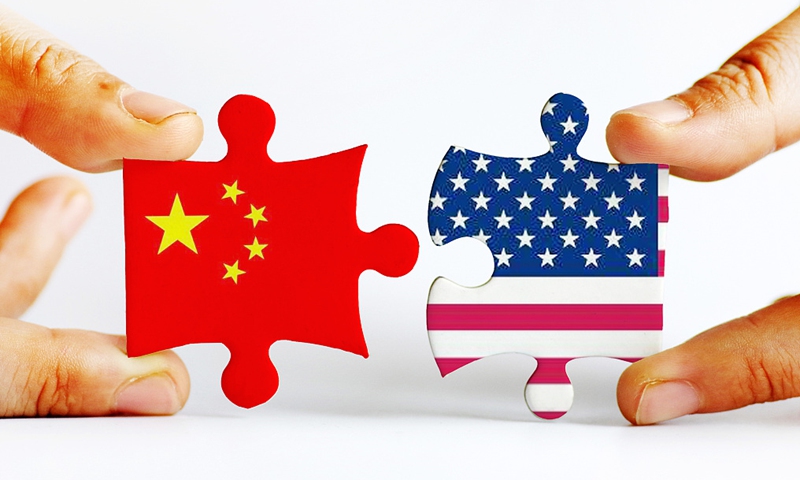US 'decoupling' attempt will be doomed to fail
Source: Global Times Published: 2020/8/6 20:53:41

China US Photo: VCG
The US' suppression of high-tech Chinese companies has accelerated to a historically high level, and its means and scopes of attacks are unprecedented if compared to previous technology conflicts.
As the Trump administration has devised various methods to push for a tech "decoupling" from China, it may be worth taking a look at the history of US-China technological cooperation to shed some new light on the current situation.
After the normalization of diplomatic relations between the US and China in the late 1970s, the two countries carried out scientific and technological cooperation under the leadership of both governments. It was not until the late 1980s that the US tightened its restrictions on tech exports to China and called a halt to government-backed technical cooperation. But that didn't stop the pace of bilateral scientific and technological cooperation as private exchanges rose significantly.
The second wave of the US crackdown on Chinese technological progress took place in 2007, when China's manufacturing sector started to gain foothold in fields like computers, mobile phones and car making.
Feeling threatened by China's rapid development, the US announced a revised regulation to expand a list of restrictive high-tech exports that covered 20 product categories and associated technologies, a move the US side said was intended to better protect its "national security."
Under such circumstances, Chinese capital began to seek technological development through overseas mergers and acquisitions. In 2016, China overtook the US in cross-border M&A volume for the first time, seeing a record high of $219.3 billion in acquisition deals, according to Dealogic.
Then, escalating reviews by the Committee on Foreign Investment in the United States (CFIUS) dashed Chinese companies' hopes of acquiring high-tech firms overseas, marking the third wave of US obstruction in China's technological advance.
Of course, none of the previous restrictions could compare to the current US squeeze on Chinese technology companies. This round of crackdown has escalated from a bargaining chip in a trade war to complete strategic containment of the world's second largest economy.
The Trump administration has resorted to means that could not have been anticipated, such as export controls, cutting Chinese companies off from American supply chains, disrupting Huawei's overseas business operations, launching the latest "Clean Network" program by decimating Chinese technology firms such as TikTok.
Perhaps the reason behind the attack is China's rapid technological development has aroused anxiety in the Trump administration. That is because China's manufacturing has gained capabilities in research and development (R&D) as well as in innovation, with a number of internationally competitive companies and brands emerging in fields like artificial intelligence, the internet, biotechnology and new energies.
The US' suppression of Chinese technology sector hasn't beaten Chinese manufacturing, but rather stimulated its potential in indigenous innovation and R&D. In the past, the US has not succeeded in blocking US-China technological cooperation, and nor will it this time.
Market forces require bilateral cooperation and exchanges, and technology knows no borders. The US government's attempt to go against the market is doomed to fail.
Posted in: GT VOICE